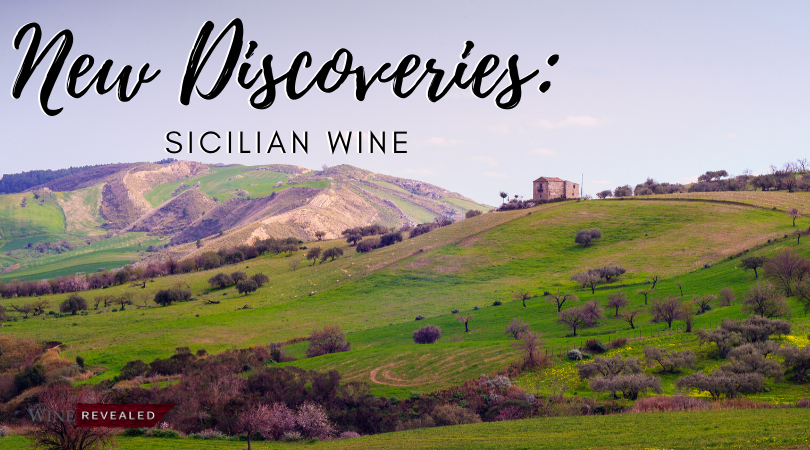To the uninitiated, thoughts of Sicily may conjure images of old gangster movies and other overwrought stereotypes of Italians that outsiders carry, thanks to Hollywood. Happily, this large Mediterranean island holds so much more: beautiful scenery, storied history, and of course, exceptional wines.
Civilization and culture in Sicily go back well over 6,000 years and include the Greeks, Phonecians, Spanish, Moors, and Romans, all of whom left their mark on the language, culture, and personality of the land and its people. In fact, it wasn’t until 1860 that Sicily joined the modern state of Italy.

It is hard to say how long exactly wine has been cultivated in Sicily, but it is among the oldest wine regions in the world. In fact, even Homer’s Odyssey speaks of the Cyclops getting drunk on Sicilian wine!
In more modern history, Sicily’s warm, sunny Mediterranean climate and well-drained mineral-rich soil is well suited to the cultivation of vineyards, which at one time led to the overproduction of mediocre wines.
In recent decades, however, pioneering winemakers on the island have followed the lead of other quality winemakers throughout Italy to step up the standards and the quality of their production and focus on native grapes. The results are magnificent, and today Sicily offers a long list of truly excellent and unique wines.
Currently, Sicily is one of the top wine-producing areas in Italy, with vineyards covering 329,923 acres of land and producing an impressive 213 million gallons of wine every year. [1]
Sicily is home to 4 major wine regions: Mount Etna, Vittoria, Noto, and Faro. Altitudes for cultivation range from sea level along the coasts to an astounding 3600 feet on the slopes of snow-capped Mt. Etna in the north.

While rainfall totals near Mt. Etna average 47 inches per year, the drier southeastern tip enjoys a mere 12 inches. [2] These variations yield a wide spectrum of conditions.
Overall, the island boasts 23 Denominazioni di Origine (DOC) and one DOCG wines. Because grape cultivation overlaps regions, and because there is cultivation throughout the island as a whole, Sicilian wines also fall under 2 catchall denominations: the Terre Siciliane Indicazione Geografica Tipica (IGT) and Sicilia DOC categories. [3]
Predominant Grapes
Nero d’Avola – This deeply colored, dark fruit flavored red is one of the most widely planted in Sicily, and also one of the top imports to the U.S. market out of Sicily.
Frappato – This red is often found in blends, and is notable for its floral aromatics and easy-drinking qualities that make it a good match for most any pairing.
Nerello Mascalese – This notable red is growing in popularity, and has unique mineral qualities due to its cultivation in the volcanic soil around Mt. Etna.
Catarratto – This variety is the most cultivated white grape in Sicily, and yields a soft, dry wine. Its biggest consumers are the Italians themselves, so grab a bottle if you can find it on shelves in the U.S.!
Grillo and Inzolia – These white grapes are blended with Catarratto to create Sicily’s signature fortified Marsala wine. Grillo tends to be on the sweeter side and is often said to have exotic fruit aromas and a peachy note to its flavor.
Carricante – This white produces a more medium-bodied acidic wine, and is grown in the environs of Mt. Etna.
Lauren Mowery. “A Beginner’s Guide to the Wines of Sicily.” Wine Enthusiast. April 16, 2019. https://www.winemag.com/2019/04/16/beginners-guide-to-the-wines-of-sicily/

It is often said that local food pairs best with local wines, and this is abundantly true in Sicily. The young, unoaked whites are a luscious choice alongside the fish and other seafoods typically enjoyed in Sicily. Sicilian reds or whites go well with the local antipasti: olives, roasted peppers, artichoke hearts, and eggplant fritters.
There are a wide variety of pasta dishes served throughout the island, and red wines are typically paired with red sauces. Big, flavorful reds are also ideal for local stews and roasted meats. Cannoli are a favored dessert in Sicily and pair beautifully with the sweet passito wines of the area. When in doubt, ask your server or wine merchant for recommendations!

